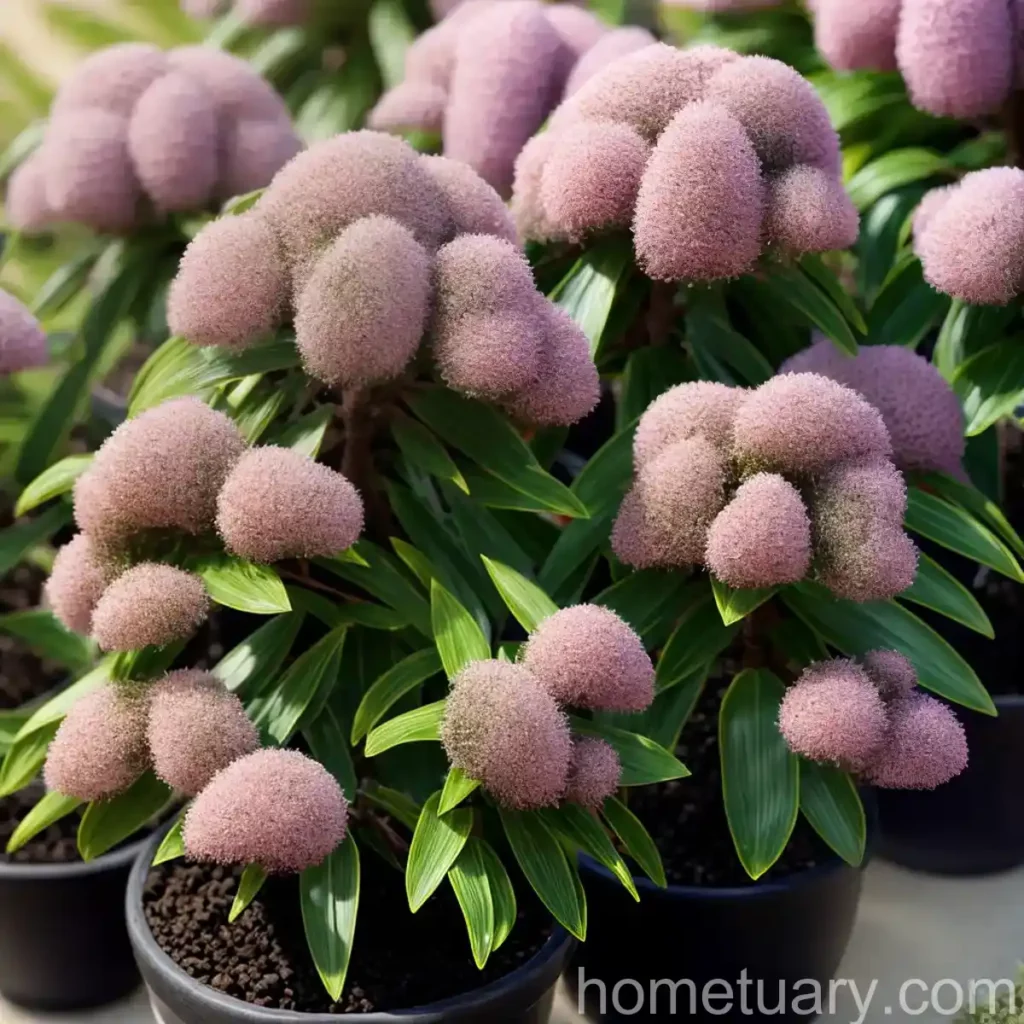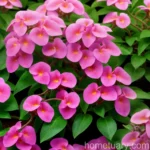Daphne (Daphne cneorum): A Comprehensive Guide
In the world of ornamental plants, daphne (Daphne cneorum) holds a special place. Renowned for its delicate beauty and captivating fragrance, this plant has captured the hearts of gardeners and plant enthusiasts around the globe. In this comprehensive guide, we will delve into the world of Daphne cneorum, exploring its characteristics, cultivation, and maintenance requirements. Whether you are a seasoned gardener or a novice plant enthusiast, this guide will equip you with the knowledge needed to foster a thriving daphne garden.
What is Daphne (Daphne cneorum)?
Daphne cneorum, commonly known as daphne, is a species of flowering plant in the family Thymelaeaceae. This evergreen shrub is native to the mountainous regions of Europe, including the Alps, Carpathians, and the Pyrenees. Its natural habitat consists of rocky slopes and limestone outcrops, where it thrives in well-drained, nutrient-poor soils.
Daphne cneorum is prized for its stunning, fragrant flowers and compact growth habit, making it an ideal choice for rock gardens, borders, and container plantings. The plant’s lush foliage and enchanting blooms have earned it a revered status among gardeners and landscapers.
Key Takeaways
Before we embark on our journey into the world of daphne (Daphne cneorum), let’s take a moment to outline the key takeaways that will guide our exploration.
- Daphne cneorum is a flowering evergreen shrub known for its captivating fragrance and compact growth habit.
- Cultivating daphne requires careful attention to its specific cultural requirements, including soil, sunlight, water, and fertilizer needs.
- Daphne cneorum is valued for its ornamental use in landscapes, as well as its potential medicinal properties and folklore associations.
- Proper diagnosis and management of common diseases and pests are essential for maintaining the health and vigor of daphne plants.
With these key points in mind, let’s delve into the intricate world of daphne (Daphne cneorum), exploring its cultural requirements, uses, and maintenance practices.
Daphne (Daphne cneorum) Culture
Uses
Daphne cneorum’s ornamental value is a hallmark of its cultural significance. This exquisite shrub is employed in various landscape settings, where it lends its charm and fragrance to garden beds, borders, and rock gardens. Additionally, daphne’s compact growth habit makes it an excellent choice for container plantings, where its stunning blooms and aromatic presence can be showcased on patios, decks, and entryways.
Beyond its ornamental uses, daphne possesses potential medicinal properties and has been associated with folklore and symbolism in different cultures. With its rich history and cultural relevance, daphne holds a special place in the hearts of gardeners and nature enthusiasts.
Water
Proper watering is essential for the health and vitality of daphne (Daphne cneorum). While it is important to ensure an adequate water supply, daphne is susceptible to root rot if it is subjected to prolonged periods of soil moisture. Maintaining moderate soil moisture levels is crucial, especially during the plant’s active growth periods and in hot, dry climates.
Sunlight
Daphne cneorum thrives in partial to full sunlight, where it can receive at least 4-6 hours of direct sunlight per day. While it appreciates ample sunlight, daphne may benefit from some protection against intense midday sun in hotter regions. Finding the right balance of sunlight exposure is key to promoting healthy growth and prolific flowering in daphne plants.
Fertilizer
Careful attention to fertilization practices is vital for nurturing thriving daphne (Daphne cneorum) plants. A balanced, slow-release fertilizer can be applied in the early spring, just as new growth begins. Additionally, incorporating organic matter into the soil can provide a steady source of nutrients for daphne plants, promoting lush foliage and abundant blooms.
Soil
Daphne cneorum thrives in well-drained, slightly acidic to neutral soils. It is crucial to ensure that the planting site provides adequate drainage, as daphne is intolerant of waterlogged conditions. A rich, humusy soil with good aeration is ideal for cultivating healthy daphne plants and supporting their vigorous growth.
Pruning
Pruning plays a pivotal role in the maintenance and shaping of daphne (Daphne cneorum). While daphne generally requires minimal pruning, dead or damaged branches should be promptly removed. Additionally, light pruning after the flowering period can help maintain the plant’s compact form and encourage new growth. Care should be taken when pruning daphne, as its sap and berries can be toxic if ingested.
Propagation
Daphne cneorum can be propagated through various methods, including seed propagation, softwood cuttings, and layering. Each method offers its advantages and challenges, and the choice of propagation technique may depend on the desired quantity and the specific characteristics of the parent plant. Propagation of daphne plants requires careful attention to environmental conditions, proper timing, and diligent care of the propagules.
Container Popularity
The compact size and ornamental appeal of daphne make it a popular choice for container gardening. Its vibrant blooms and delightful fragrance lend themselves beautifully to patio planters, balcony gardens, and outdoor living spaces. When grown in containers, it is crucial to provide well-draining, nutrient-rich soil and to adjust watering and fertilization practices to suit the needs of daphne plants in a contained environment.
Common Diseases
Disease Diagnoses
Daphne (Daphne cneorum) is susceptible to a range of diseases, including fungal infections, root rot, and leaf spot. Proper diagnosis of any suspected disease is essential for implementing effective management strategies. Early detection of symptoms, such as leaf discoloration, wilting, or unusual growth patterns, can help in identifying and addressing potential diseases before they severely impact the plant’s health.
Common Pests
In addition to diseases, daphne may also attract several common pests, including aphids, scale insects, and spider mites. Regular monitoring of the plant’s foliage and stems can help in identifying pest infestations and implementing control measures. Integrated pest management practices, including cultural, biological, and chemical control methods, can aid in mitigating the impact of pests on daphne plants.
Botanist’s Tips
To foster thriving daphne (Daphne cneorum) plants, it is essential to keep several key tips in mind:
- Selecting the Right Cultivar: Different varieties of daphne offer unique characteristics, such as flower color, growth habit, and fragrance. Carefully assess the specific traits of each cultivar to choose the right daphne plant for your landscape or gardening project.
- Environmental Considerations: Understanding the local climate, soil conditions, and sunlight exposure is crucial for providing an optimal growing environment for daphne. By considering these factors, you can tailor your cultivation practices to meet the specific needs of daphne plants.
- Vigilant Monitoring: Regularly inspecting daphne plants for signs of diseases, pests, and nutrient deficiencies can help in addressing potential issues promptly, safeguarding the plant’s health and longevity.
- Proper Pruning Practices: When pruning daphne, it is important to use sharp, clean tools and to apply appropriate techniques to minimize stress on the plant and promote healthy growth. Furthermore, exercising caution when handling daphne’s toxic parts is essential to prevent any potential risks.
Fun Facts
- Daphne cneorum is associated with various folklore and symbolism in different cultures, where it is often linked to themes of love, purity, and transformation.
- The intoxicating fragrance of daphne’s blooms has inspired poets, artists, and gardeners throughout history, earning it a place in the hearts of many as a symbol of beauty and allure.
- Some varieties of daphne are renowned for their winter blooming, adding a touch of color and fragrance to gardens during the colder months.
Links to External Resources
For further information on daphne (Daphne cneorum), including specific cultivars, cultivation practices, and disease management, consider exploring the following external resources:
- Royal Horticultural Society (RHS) – Daphne Cultivation Guide
- American Society for the Prevention of Cruelty to Animals (ASPCA) – Daphne Safety for Pets
- University of California Integrated Pest Management – Daphne Diseases and Pests
By delving into the intricate world of daphne (Daphne cneorum), we have uncovered the cultural significance, cultivation requirements, and captivating allure of this charming shrub. Whether you seek to adorn your garden with its fragrant blooms or are enamored by its folklore and symbolism, daphne offers a delightful journey into the realm of ornamental plants. Armed with the knowledge and insights offered in this comprehensive guide, you are well-equipped to nurture thriving daphne plants and revel in their timeless beauty.















